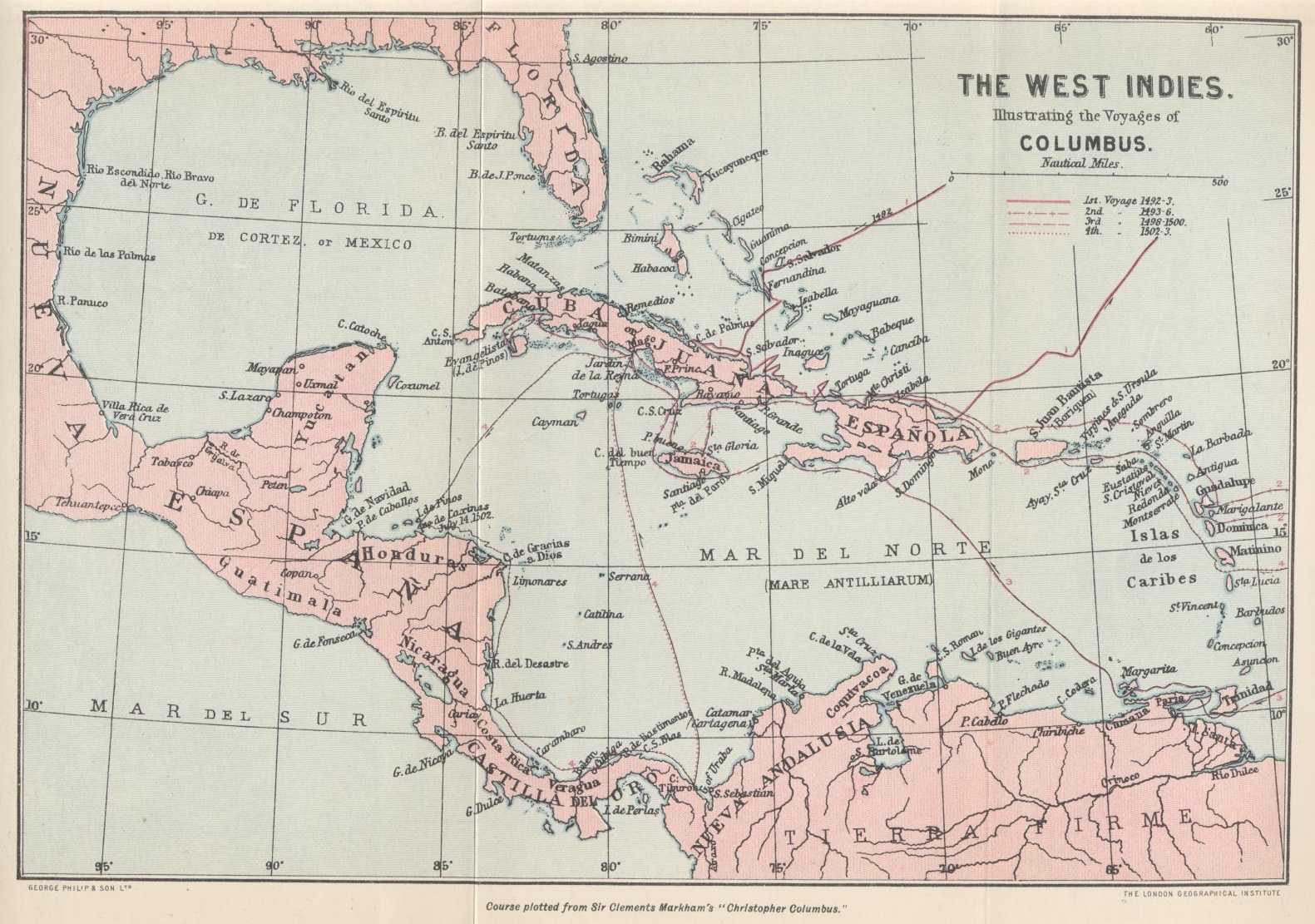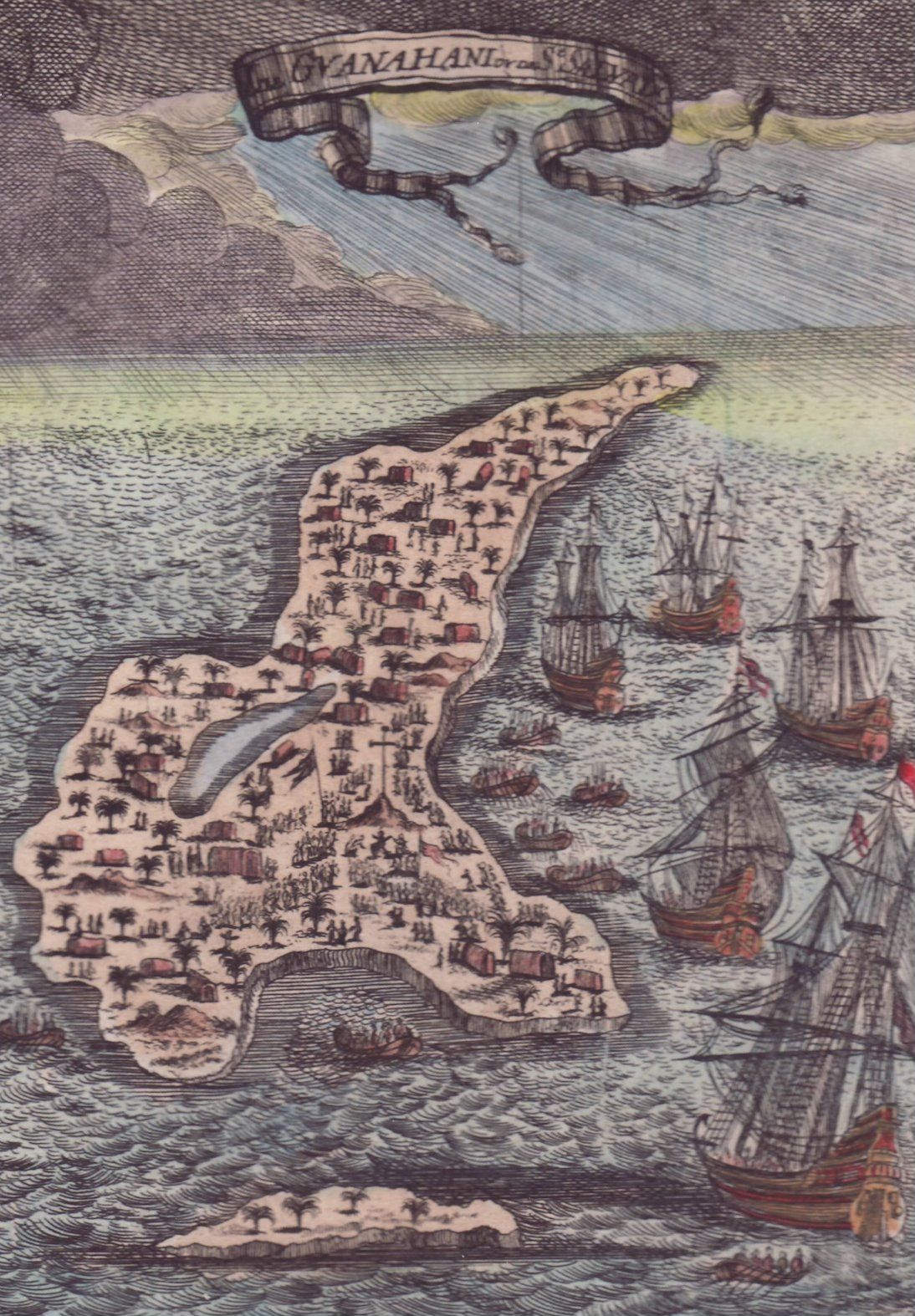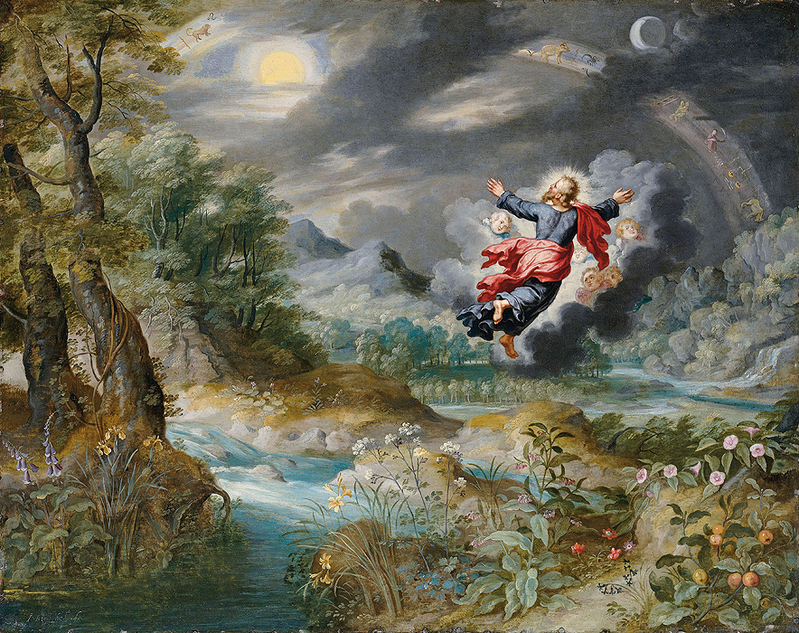|
Columbian Viceroyalty
The Columbian Viceroyalty, Viceroyalty of the Indies or First Viceroyalty in the Indies is the name that designates the number of titles and rights granted to Christopher Columbus by the Catholic Monarchs in 1492 on the lands discovered and undiscovered, before embarking on his first trip that culminated in the colonization of the Americas. Origins The titles and powers over discovered lands granted to Christopher Columbus were entered in the capitulations of Santa Fe agreed on April 17 of 1492. Under them, the Catholic Monarchs, Isabella and Ferdinand, awarded ''for the period of his life, and after his death, to be conferred on his heirs or Successors one after the other perpetually'': * The title of Admiral of the Ocean Sea over all the islands and the mainland that discovered or won in this sea. * The titles, always referred to together, of "Viceroy and Governor General". In addition, other powers and economic prerogatives. These titles would be confirmed by the monarc ... [...More Info...] [...Related Items...] OR: [Wikipedia] [Google] [Baidu] |
Viceroyalty
A viceroyalty was an entity headed by a viceroy. It dates back to the Spanish colonization of the Americas in the sixteenth century. British Empire India * British Raj, India was governed by the Governor-General of India, Governor-General and Viceroy of India from 1858 to 1947, commonly shortened to "Viceroy of India". Ireland * Kingdom of Ireland, Ireland was governed by the Lord Lieutenant of Ireland, who was the representative of the British Monarchy in Ireland from the Williamite period until independence, was also called the Viceroy of Ireland. France * Viceroyalty of New France Portuguese Empire In the scope of the Portuguese Empire, the term "Viceroyalty of Brazil" is also occasionally used to designate the colonial State of Brazil, in the historic period while its governors had the title of "Viceroy". Some of the governors of Portuguese India were also called "Viceroy". * Viceroyalty of Brazil * List of governors of Portuguese India, Governors of Portuguese India Russ ... [...More Info...] [...Related Items...] OR: [Wikipedia] [Google] [Baidu] |
Spanish Language
Spanish () or Castilian () is a Romance languages, Romance language of the Indo-European languages, Indo-European language family that evolved from the Vulgar Latin spoken on the Iberian Peninsula of Europe. Today, it is a world language, global language with 483 million native speakers, mainly in the Americas and Spain, and about 558 million speakers total, including second-language speakers. Spanish is the official language of List of countries where Spanish is an official language, 20 countries, as well as one of the Official languages of the United Nations, six official languages of the United Nations. Spanish is the world's list of languages by number of native speakers, second-most spoken native language after Mandarin Chinese; the world's list of languages by total number of speakers, fourth-most spoken language overall after English language, English, Mandarin Chinese, and Hindustani language, Hindustani (Hindi-Urdu); and the world's most widely spoken Romance language ... [...More Info...] [...Related Items...] OR: [Wikipedia] [Google] [Baidu] |
Guanahani
Guanahaní (meaning "small upper waters land") was the Taíno language, Taíno name of an island in the Bahamas that was the first land in the New World sighted and visited by Christopher Columbus' Voyages of Christopher Columbus#First voyage (1492–1493), first voyage, on 12 October 1492. It is a bean-shaped island that Columbus called San Salvador. Guanahaní has traditionally been identified with Watlings Island, which was officially renamed San Salvador Island in 1925 as a result, but modern scholars are divided on the accuracy of this identification and several alternative candidates in and around the southern Bahamas have been proposed as well. Primary sources Letter from Columbus himself Upon his return to Spain in the spring of 1493, Columbus Columbus Letter on the First Voyage, wrote a letter to Luis de Santangel, one of his patrons at the Royal Court of Kingdom of Castile, Castile. The letter was printed widely and translated into many languages, spreading the news of ... [...More Info...] [...Related Items...] OR: [Wikipedia] [Google] [Baidu] |
Americas
The Americas, sometimes collectively called America, are a landmass comprising the totality of North America and South America.''Webster's New World College Dictionary'', 2010 by Wiley Publishing, Inc., Cleveland, Ohio. When viewed as a single continent, the Americas or America is the 2nd largest continent by area after Asia, and is the 3rd largest continent by population. The Americas make up most of the land in Earth's Western Hemisphere and comprise the New World. Along with their Lists of islands of the Americas, associated islands, the Americas cover 8% of Earth's total surface area and 28.4% of its land area. The topography is dominated by the American Cordillera, a long chain of mountains that runs the length of the west coast. The flatter eastern side of the Americas is dominated by large river basins, such as the Amazon basin, Amazon, St. Lawrence River–Great Lakes, Mississippi River System, Mississippi, and Río de la Plata Basin, La Plata basins. Since the Americ ... [...More Info...] [...Related Items...] OR: [Wikipedia] [Google] [Baidu] |
Governor General
Governor-general (plural governors-general), or governor general (plural governors general), is the title of an official, most prominently associated with the British Empire. In the context of the governors-general and former British colonies, governors-general continue to be appointed as viceroy to represent the monarch of a personal union in any sovereign state over which the monarch does not normally reign in person (non-UK Commonwealth realm). In the British Empire, governors-general were appointed on the advice of the government of the United Kingdom and were often British aristocracy, but in the mid-twentieth century they began to be appointed on the advice of the independent government of each realm and be citizens of each independent state. Governors-general have also previously been appointed in respect of major colonial states or other territories held by either a monarchy or republic, such as Japan, Korea, Taiwan and France in Indochina. Current uses In modern ... [...More Info...] [...Related Items...] OR: [Wikipedia] [Google] [Baidu] |
Viceroy
A viceroy () is an official who reigns over a polity in the name of and as the representative of the monarch of the territory. The term derives from the Latin prefix ''vice-'', meaning "in the place of" and the Anglo-Norman ''roy'' (Old French ''roi'', ''roy''), meaning "king". This denotes the position as one who acts on behalf of a king or monarch. A viceroy's territory may be called a viceroyalty, though this term is not always applied. The adjective form is ''viceregal'', less often ''viceroyal''. The term ''vicereine'' is sometimes used to indicate a female viceroy '' suo jure'', although ''viceroy'' can serve as a gender-neutral term. Vicereine is more commonly used to indicate a viceroy's wife, known as the ''viceregal consort''. The term has occasionally been applied to the governors-general of the Commonwealth realms, who are ''viceregal'' representatives of the monarch. The position of a viceroy is by royal appointment rather than a noble rank. An individual vicer ... [...More Info...] [...Related Items...] OR: [Wikipedia] [Google] [Baidu] |
Admiral
Admiral is one of the highest ranks in many navies. In the Commonwealth nations and the United States, a "full" admiral is equivalent to a "full" general in the army or the air force. Admiral is ranked above vice admiral and below admiral of the fleet, or fleet admiral. Etymology The word in Middle English comes from Anglo-French , "commander", from Medieval Latin , . These evolved from the Arabic () – () (), "king, prince, chief, leader, nobleman, lord, a governor, commander, or person who rules over a number of people" and (), the Arabic definite article meaning "the." In Arabic, admiral is also represented as (), where al-Baḥr (البحر) means the sea. The 1818 edition of Samuel Johnson's '' A Dictionary of the English Language'', edited and revised by the Rev. Henry John Todd, states that the term "has been traced to the Arab. emir or amir, lord or commander, and the Gr. , the sea, q. d. ''prince of the sea''. The word is written both with and without ... [...More Info...] [...Related Items...] OR: [Wikipedia] [Google] [Baidu] |
Ferdinand II Of Aragon
Ferdinand II, also known as Ferdinand I, Ferdinand III, and Ferdinand V (10 March 1452 – 23 January 1516), called Ferdinand the Catholic, was King of Aragon from 1479 until his death in 1516. As the husband and co-ruler of Queen Isabella I of Castile, he was also King of Castile from 1475 to 1504 (as Ferdinand V). He reigned jointly with Isabella over a Dynastic union, dynastically unified Spain; together they are known as the Catholic Monarchs. Ferdinand is considered the ''de facto'' first king of Spain, and was described as such during his reign, even though, legally, Crown of Castile, Castile and Crown of Aragon, Aragon remained two separate kingdoms until they were formally united by the Nueva Planta decrees issued between 1707 and 1716. The Crown of Aragon that Ferdinand inherited in 1479 included the kingdoms of Kingdom of Aragon, Aragon, Kingdom of Valencia, Valencia, Kingdom of Majorca, Majorca, Kingdom of Sardinia, Sardinia, and Kingdom of Sicily, Sicily, as well as ... [...More Info...] [...Related Items...] OR: [Wikipedia] [Google] [Baidu] |
Isabella I Of Castile
Isabella I (; 22 April 1451 – 26 November 1504), also called Isabella the Catholic (Spanish: ''Isabel la Católica''), was Queen of Castile and List of Leonese monarchs, León from 1474 until her death in 1504. She was also Queen of Aragon from 1479 until her death as the wife of King Ferdinand II of Aragon, Ferdinand II. Reigning together over a Dynastic union, dynastically unified Spain, Isabella and Ferdinand are known as the Catholic Monarchs of Spain, Catholic Monarchs. Her reign marked the end of Reconquista and also the start of Spanish Empire and dominance of Spain over European Politics for the next century. After a struggle to claim the throne, Isabella reorganized the governmental system, brought the crime rate down, and unburdened the kingdom of the debt which her half-brother King Henry IV of Castile, Henry IV had left behind. Isabella's marriage to Ferdinand of Aragon in 1469 created the basis of the ''de facto'' unification of Spain. Her reforms and those she ... [...More Info...] [...Related Items...] OR: [Wikipedia] [Google] [Baidu] |
Capitulations Of Santa Fe
The Capitulations of Santa Fe between Christopher Columbus and the Catholic Monarchs, Queen Isabella I of Castile and King Ferdinand II of Aragon, were signed in Santa Fe, Granada on April 17, 1492. They granted Columbus the titles of admiral of the Ocean Sea, viceroy, and governor-general and the honorific Don (honorific), don, and also the tenth part of all riches to be obtained from his intended voyage.John Michael Francis, Will Kaufman. ''Iberia and the Americas'', ABC-CLIO, 2005, p. 176 The document followed a standard form in 15th-century Crown of Castile, Castile with specific points arranged in chapters (''capítulos''). When Columbus's proposal was initially rejected, Queen Isabella convoked another assembly, made up from sailors, philosophers, astrologers and others to reexamine the project. The experts considered absurd the distances between Spain and the Indies#History, Indies that Columbus calculated. The monarchs also became doubting, but a group of influential court ... [...More Info...] [...Related Items...] OR: [Wikipedia] [Google] [Baidu] |
Rights
Rights are law, legal, social, or ethics, ethical principles of freedom or Entitlement (fair division), entitlement; that is, rights are the fundamental normative rules about what is allowed of people or owed to people according to some legal system, social convention, or ethical theory. Rights are an important concept in law and ethics, especially theories of justice and deontology. The history of social conflicts has often involved attempts to define and redefine rights. According to the ''Stanford Encyclopedia of Philosophy'', "rights structure the form of governments, the content of laws, and the shape of morality as it is currently perceived". Types of rights Natural versus legal * Natural rights are rights which are "natural" in the sense of "not artificial, not man-made", as in rights deriving from human nature or from the divine command theory, edicts of a god. They are universal; that is, they apply to all people, and do not derive from the laws of any specific soci ... [...More Info...] [...Related Items...] OR: [Wikipedia] [Google] [Baidu] |
Titles
A title is one or more words used before or after a person's name, in certain contexts. It may signify their generation, official position, military rank, professional or academic qualification, or nobility. In some languages, titles may be inserted between the first and last name (for example, in German or clerical titles such as Cardinal in Catholic usage – Richard Cardinal Cushing). Some titles are hereditary. Types Titles include: * Honorific titles or styles of address, a phrase used to convey respect to the recipient of a communication, or to recognize an attribute such as: ** Imperial, royal and noble rank ** Academic degree ** Social title, prevalent among certain sections of society due to historic or other reasons. ** Other accomplishment, as with a title of honor * Title of authority, an identifier that specifies the office or position held by an official Titles in English-speaking areas Common titles * Mr. – All males * Ms. – Adult women * Mrs. � ... [...More Info...] [...Related Items...] OR: [Wikipedia] [Google] [Baidu] |









